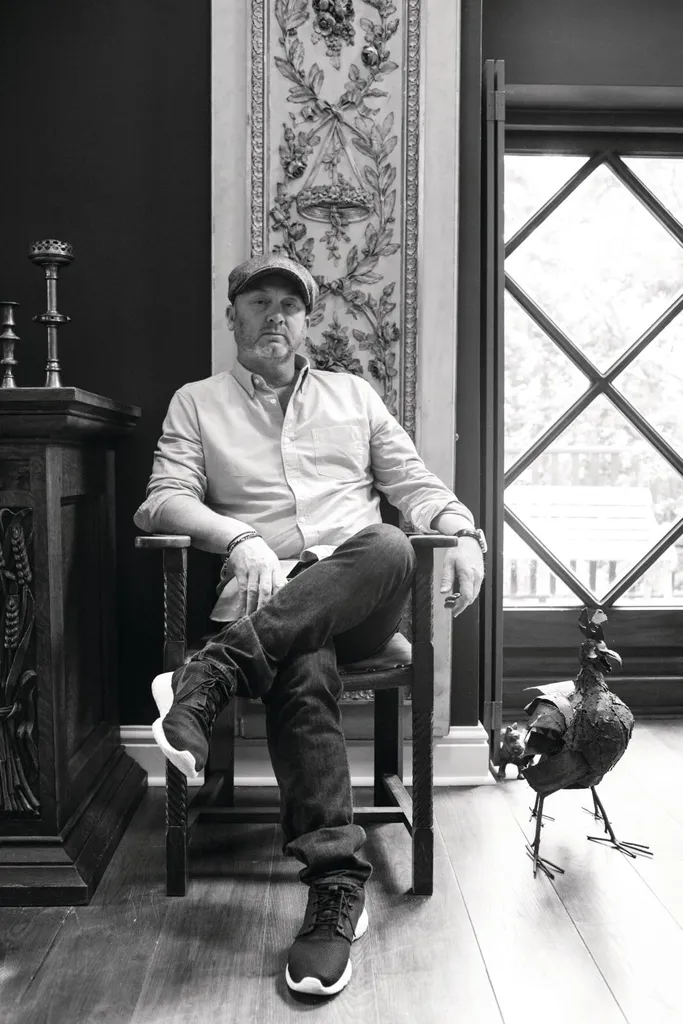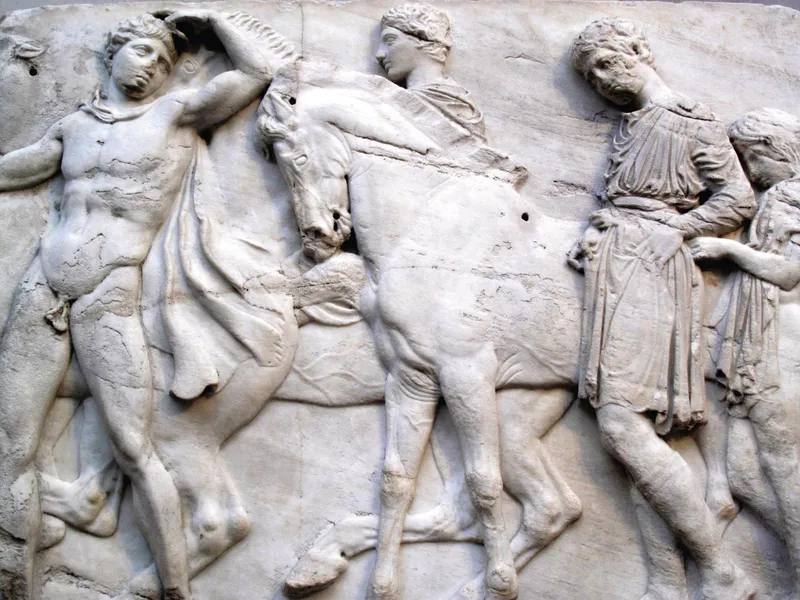What sparked your interest in antiques?
For as long as I can remember, I’ve been fascinated by objects that looked, for want of a better expression, ‘worn out’. I was excited about the possibility of buying them and fixing them.
My father was a sign writer, and the antiques dealers coming down the drive to have their vans and shop signs written always looked interesting to me.
Now, all these years later, some of those dealers have become friends, and I now trade with them. I started as a restorer on the Youth Training Scheme and, on my first day, a van pulled up that said ‘Architectural Antiques’.
When we opened the back, it was full of stained-glass windows, doors, door handles, carved timber and fireplaces. I instantly knew this was the world I wanted to be part of, and the way in was to become a restorer.

What was the first piece you bought?
If I’m honest, the first piece I bought wasn’t an antique but a pair of Dr Martens boots.
Being a little scooter boy mod, aged 12 or 13, everybody wanted them (and a Harrington jacket), so I wiled and dealt my way to a pair, buying and selling dinner tickets until I managed to make enough to buy a pair of eight-hole black Dr Martens.
That was when I realised I was good at buying and selling things. I loved them, and I would wear them while listening to The Jam, The Specials and Madness…
What was your biggest mistake in relation to antiques and what did it teach you?
My biggest mistake was hesitating when I was offered a very good thing. I thought it was really expensive when, in reality, the money wasn’t what was important: it was the fact that I’d been offered the piece in the first place.
Of the antiques you own, do you have a favourite?
My favourite item is a large plaster plaque of the Parthenon frieze that I bought on Salvage Hunters about 10 years ago.

It’s important to me because it’s a moment in time that will never be repeated, and it’s an
extraordinary example of the plaster maker’s skills.
It has an incredible history leading up to its creation and has an amazing presence in the living room of my house – the more I look at it, the better it gets.
It really isn’t about the monetary value, it’s about a place in time where something ended up in another country when it shouldn’t have – depending on your point of view.
If money were no object, what would you buy and why?
I would buy a painting by JMW Turner. In my opinion he is the greatest painter of all time. I saw one of his works at a very early age, The Fighting Temeraire, which my father then copied and my mother still owns.
Looking at that painting sparked something in me; I understood it and Turner, and I was overawed by the skill and beauty of it.
Last week I was in Portugal and I viewed another painting by Turner that I hadn’t seen before; standing there looking at it almost brought me to tears.

And, finally, what advice do you have for fellow collectors or future dealers?
Read everything you can on the subject that you’re interested in, view as many things in collections and museums as you can, know your subject inside out and buy the very, very best example that you possibly can. It’s better to own one great piece than 50 mediocre ones.
More from Homes & Antiques
- Inside Drew Pritchard's antiques-filled home
- The Antiques That Shpaed Me: Lennox Cato
- Antiques the experts love and loathe
- The Antiques That Shaped Me: Annie Sloan
Sign up to our weekly newsletter to enjoy more H&A content delivered to your inbox.